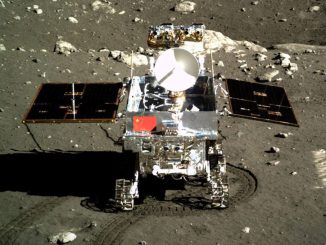
On Tuesday, the 5-day-old lunar crescent lies in the same low-power binocular field as the Hyades, the closest open cluster to the Solar System at an average distance of about 150 light-years. With optical aid, note that the area is strewn with interesting wide double stars, particularly in the vicinity of naked-eye pair θ1 and θ2 Tauri. The Hyades contains hundreds of stars that lie within a 10 light-year radius that are around 625 million years old.
Stars ε (epsilon), δ (delta), γ (gamma) and θ (theta) Tauri, plus the constellation’s brightest star, Aldebaran, form the distinctive V-shaped Hyades asterism that is known as the ‘head of the bull’. Aldebaran is an orange giant star some 65 light-years away, much closer to us and therefore unconnected with the cluster that happens to be in the same line of sight.
While you’re in Taurus, never miss an opportunity to view the beautiful Pleiades open cluster, otherwise known as the Seven Sisters or Messier 45, two binocular fields away to the right of Aldebaran. The Pleiades cluster is three times further away than the Hyades, but it’s much richer — around a thousand component stars lie within an 8-light-year radius. Messier 45 is up to 150 million years old and its brightest, hot blue stars are wreathed in delicate nebulosity that only shows up clearly in long exposure photographs.
On Wednesday evening this week, note how the 6-day-old Moon lies to the upper left of Aldebaran. Careful observation of the Moon’s position at the same time of night between Tuesday and Wednesday would reveal that it had moved a little over 13° (for scale, the span of a fist at arm’s length is about 10°). This implies that the lunar sidereal period — the time taken for the Moon and Earth to orbit their common centre of gravity — is approximately 360°/13° = ~27 days (the actual value is 27.322 days). Simple observations such as these can reveal a lot about the mechanics of planetary orbits.
Clear skies!
Inside the magazine
Find out more about what’s up in the night sky every month in Astronomy Now the UK’s biggest and longest running astronomy magazine.
Never miss an issue by subscribing. Also available for iPad/iPhone and Android devices.




